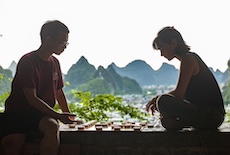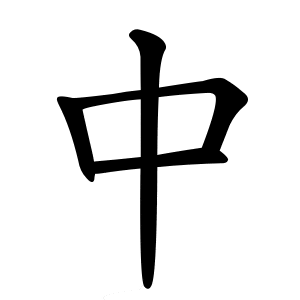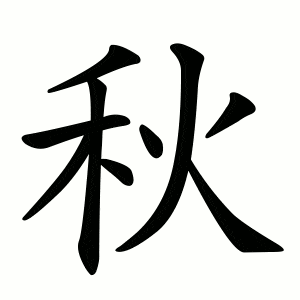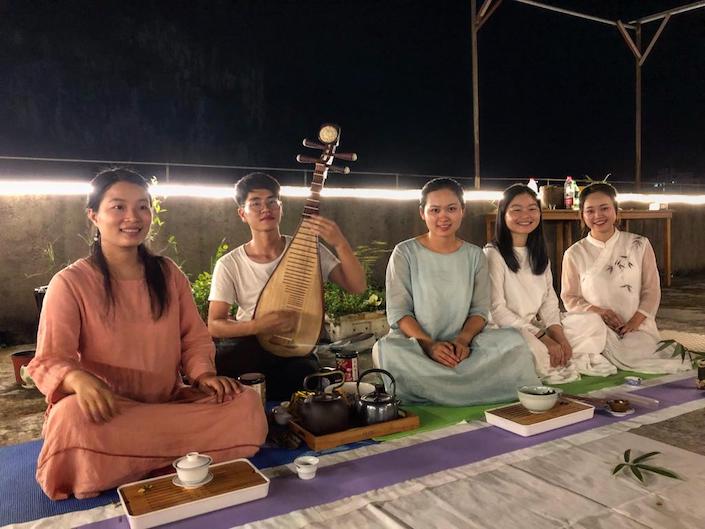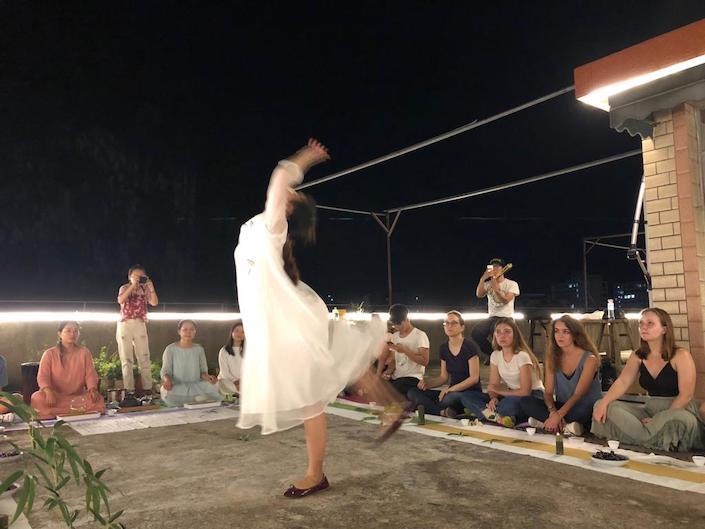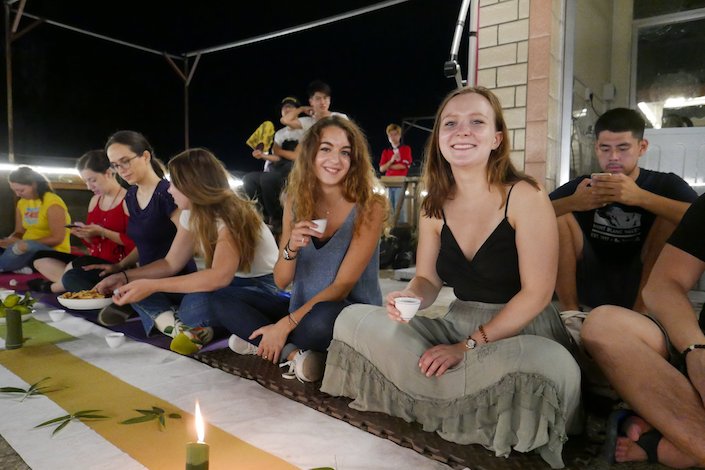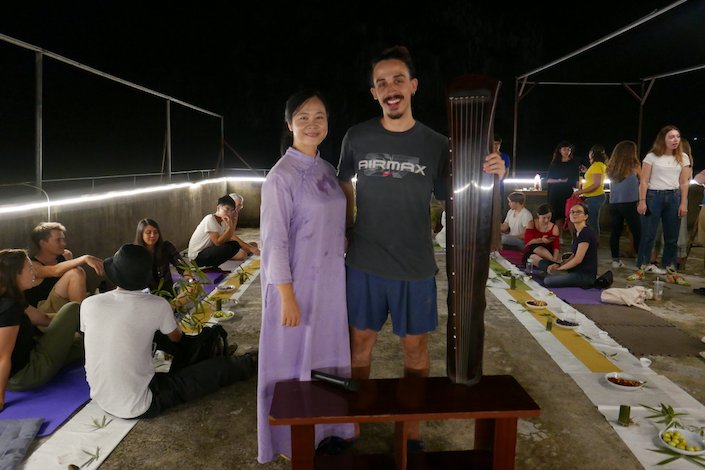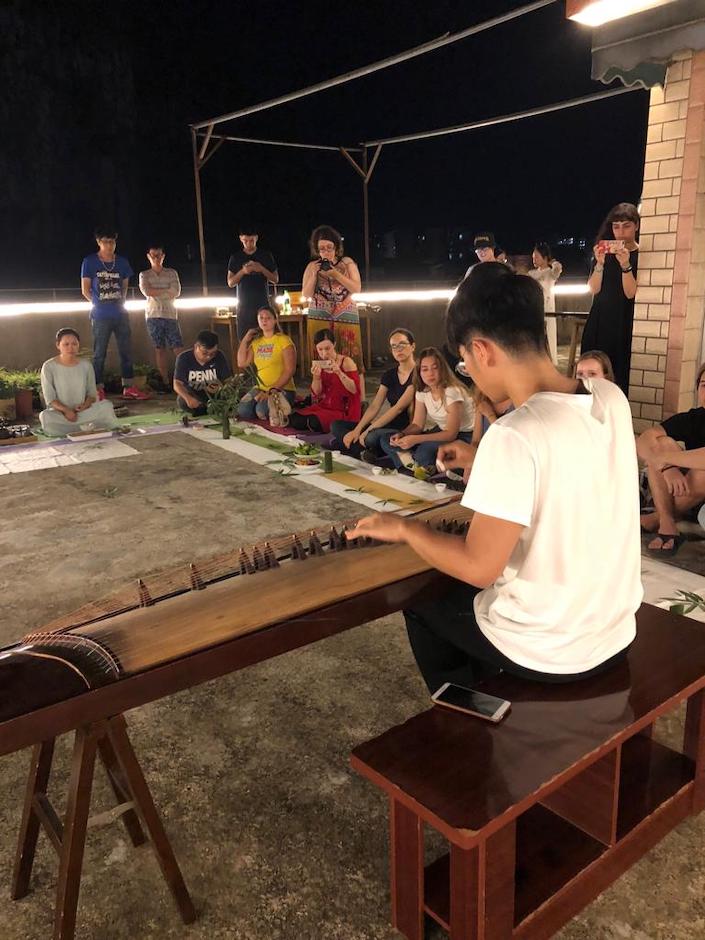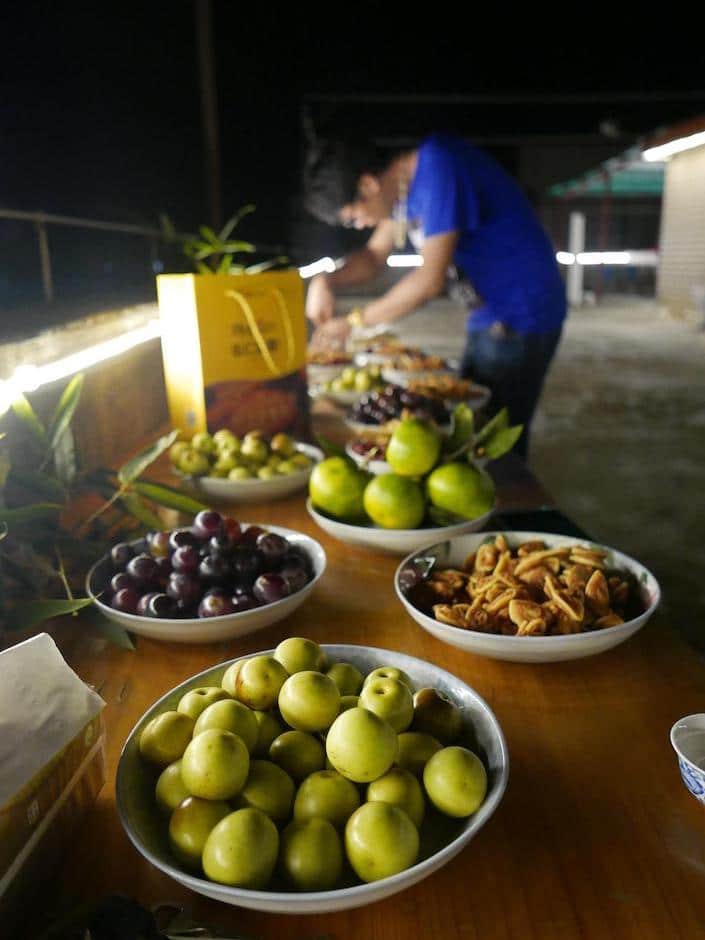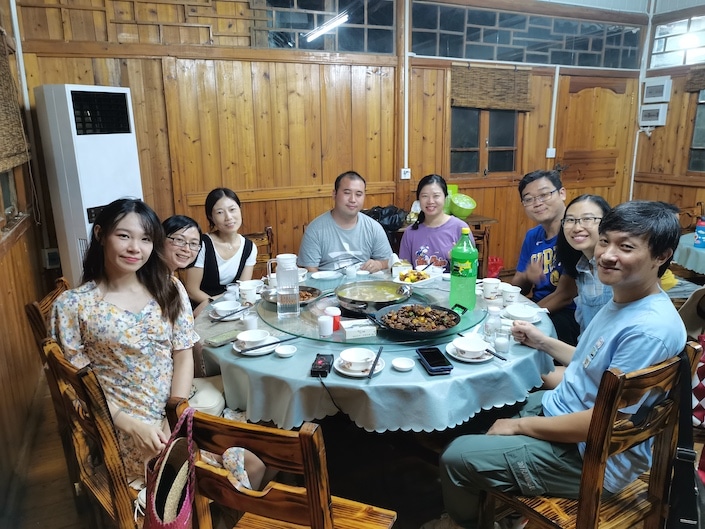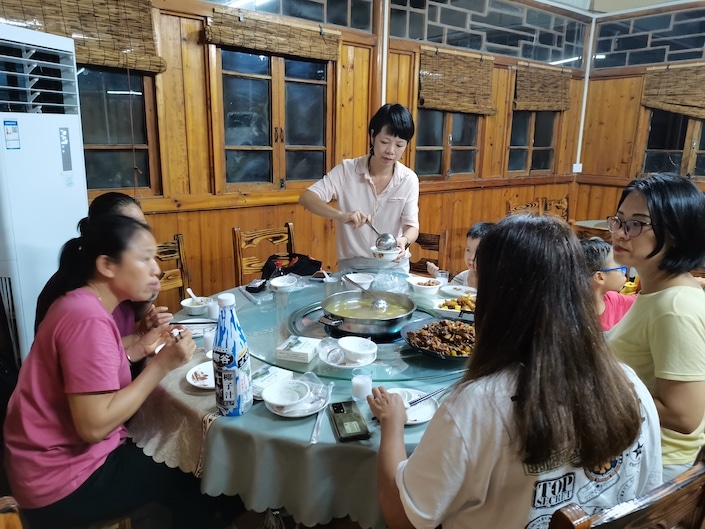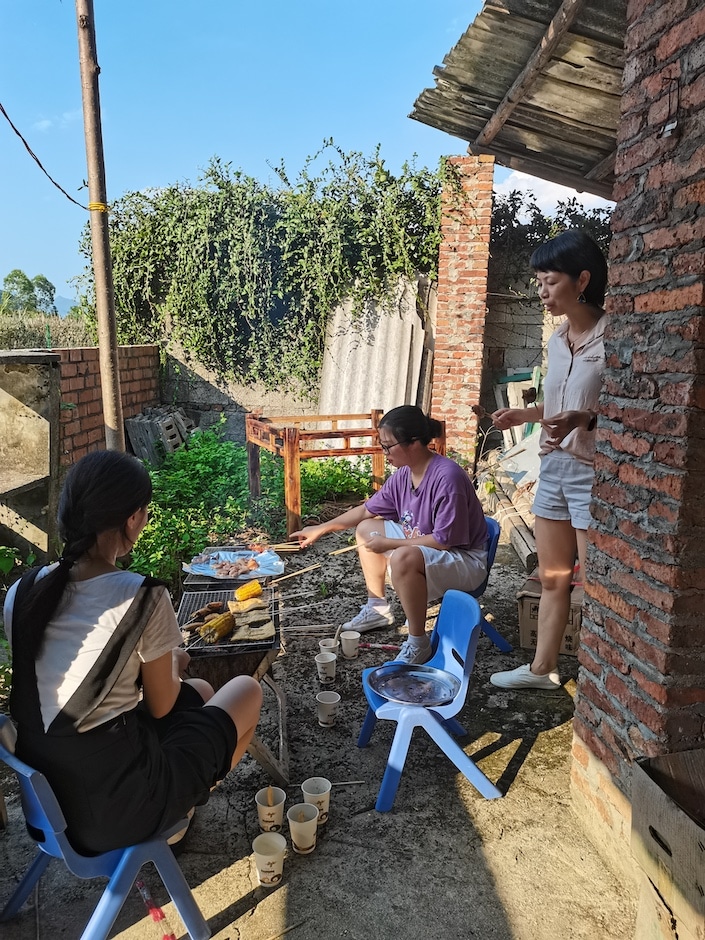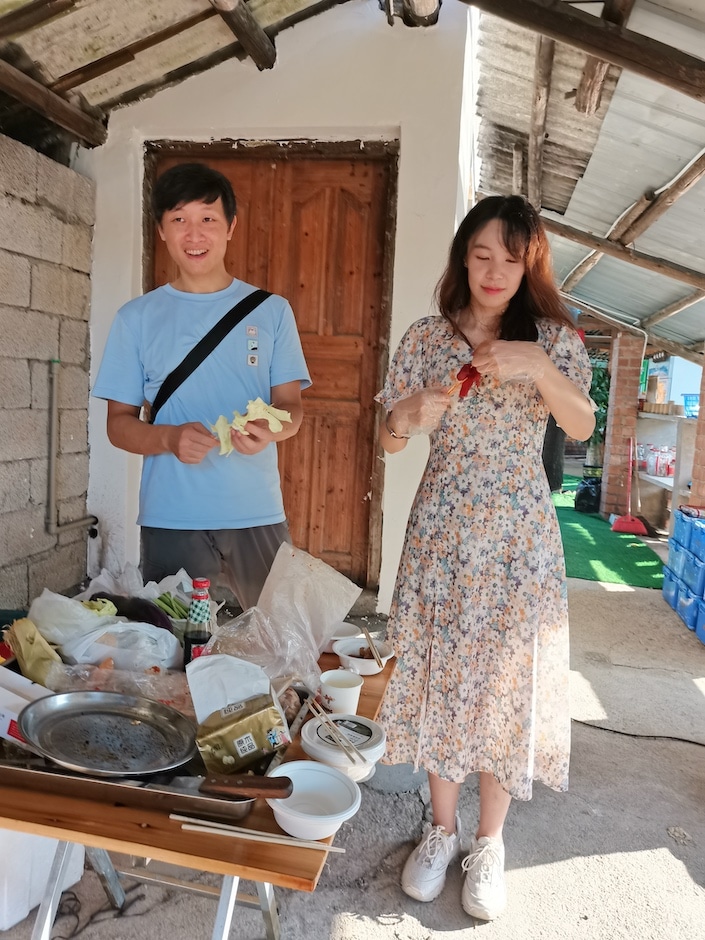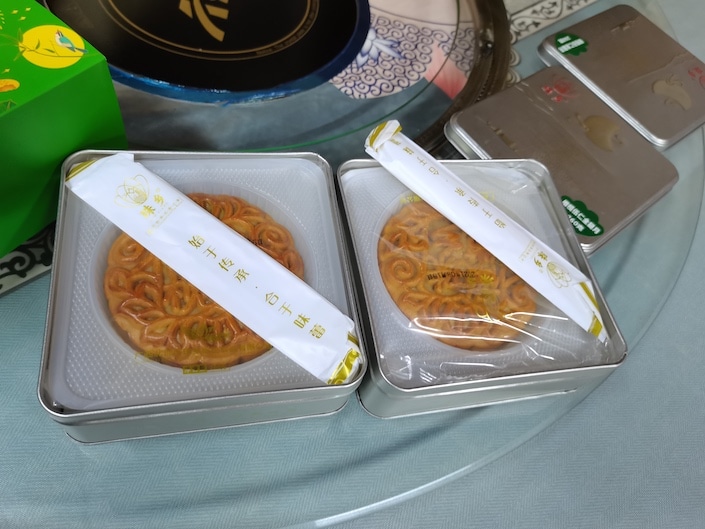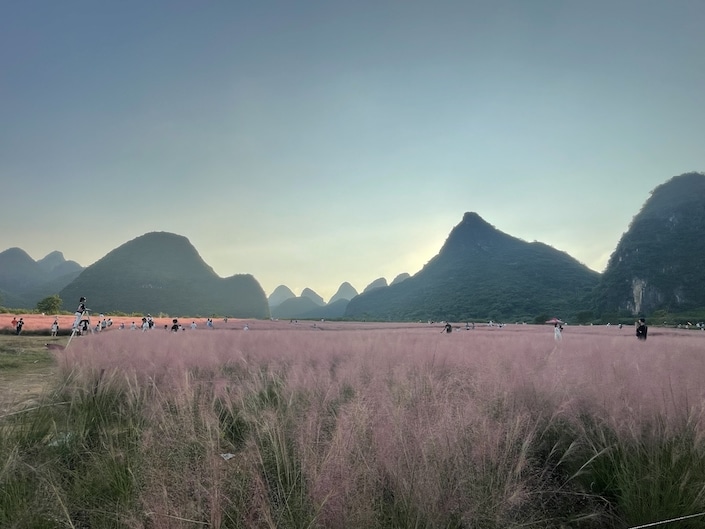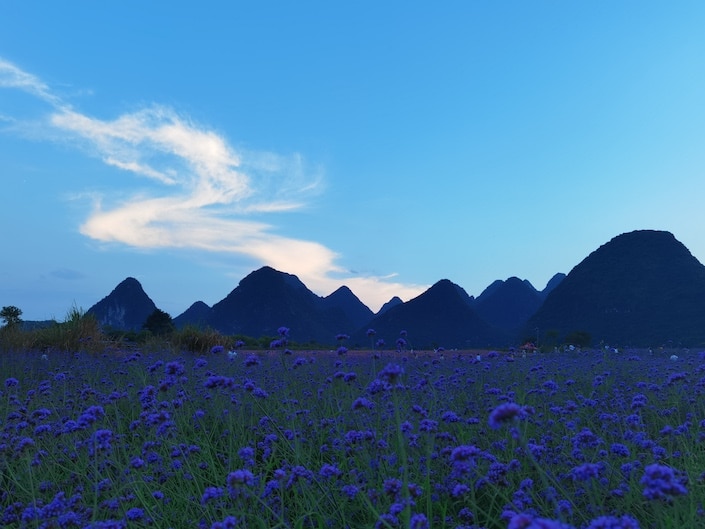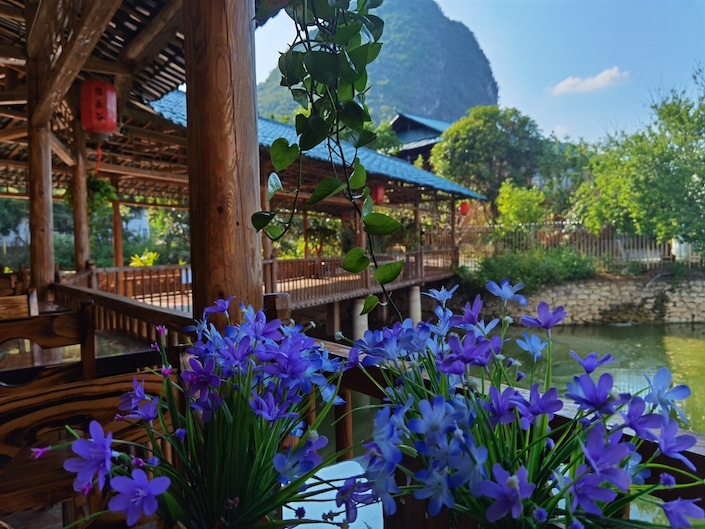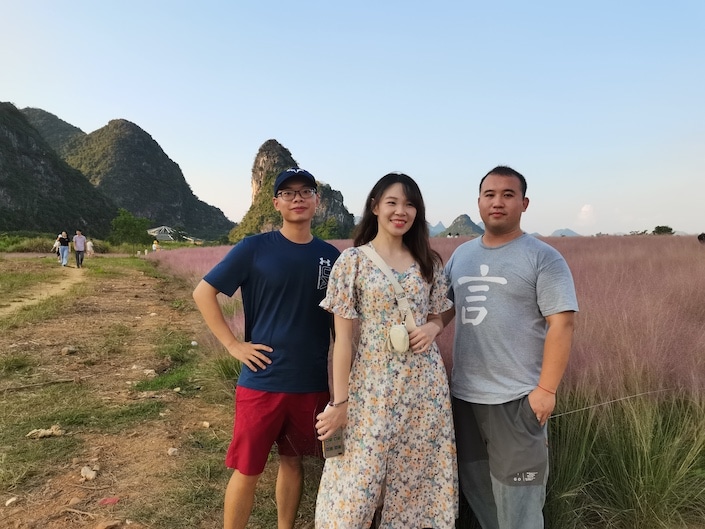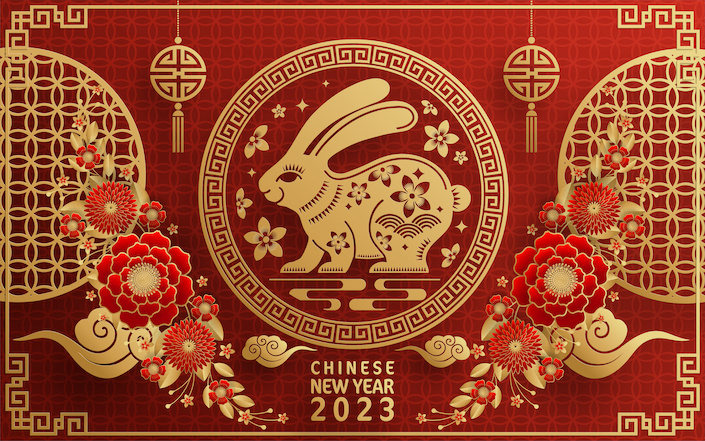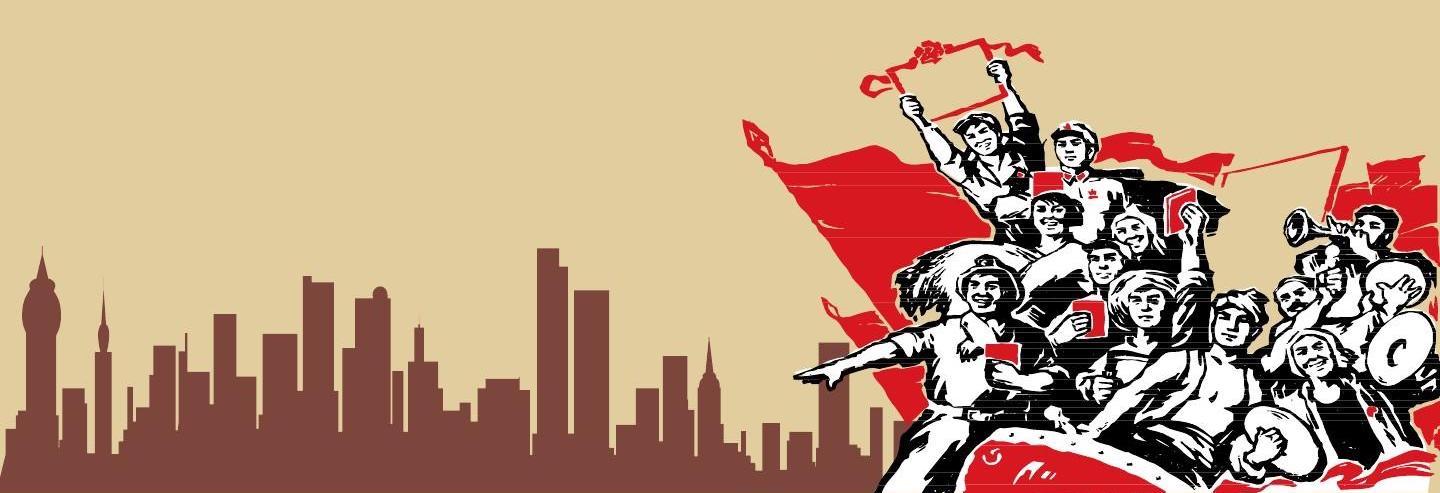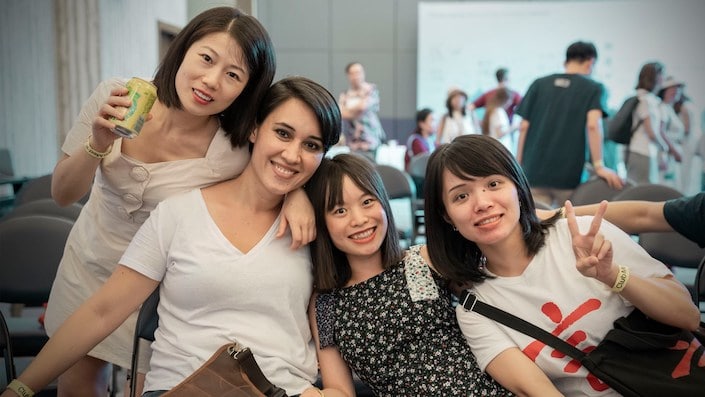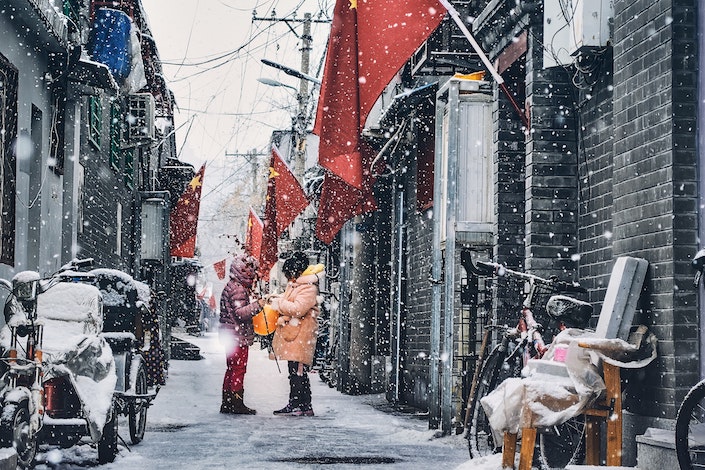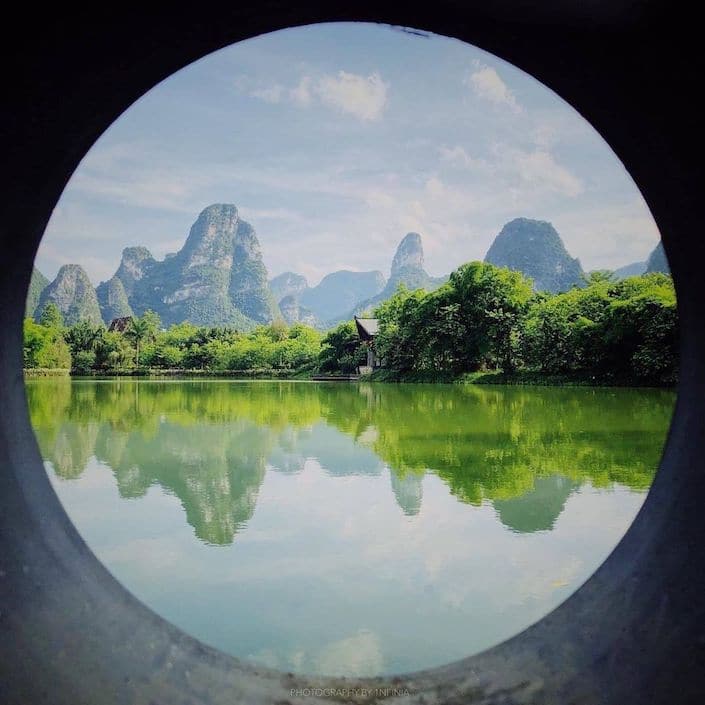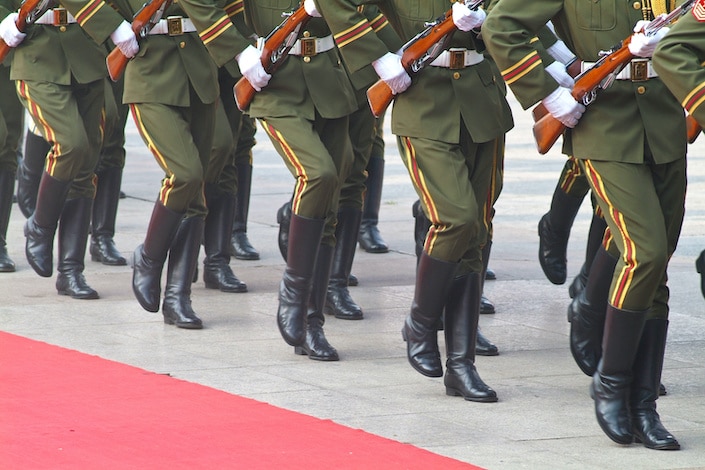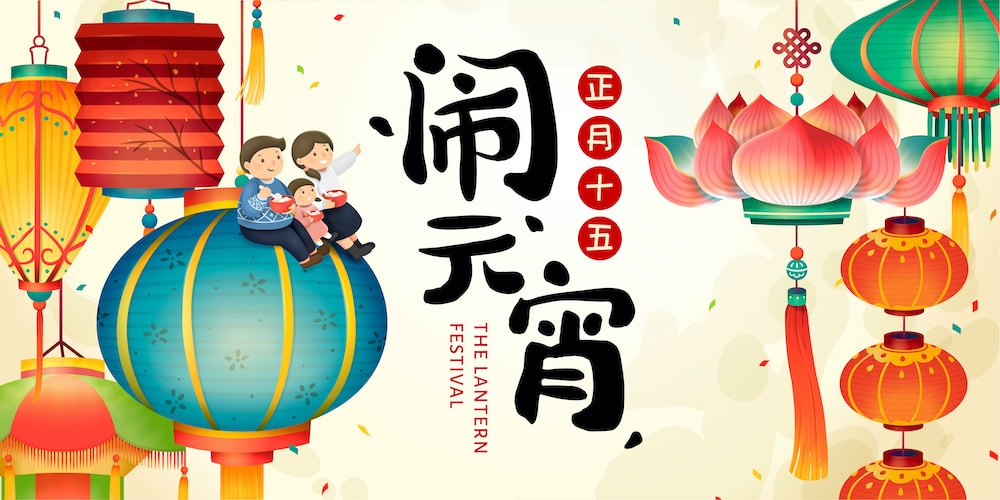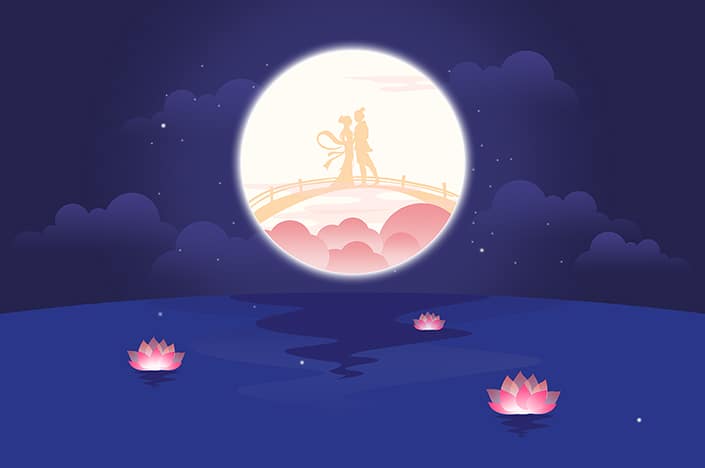China's Mid-Autumn Festival: A Celebration of Family, Friends, and the Coming Harvest
Learn Chinese in China or on Zoom and gain fluency in Chinese!
Join CLI and learn Chinese with your personal team of Mandarin teachers online or in person at the CLI Center in Guilin, China.
The Mid-Autumn Festival is one of the most important holidays in China and is recognized and celebrated by ethnic Chinese around the world. The festival is held on the 15th day of the eighth month of the Chinese lunisolar calendar (the night of the full moon between early September and October).
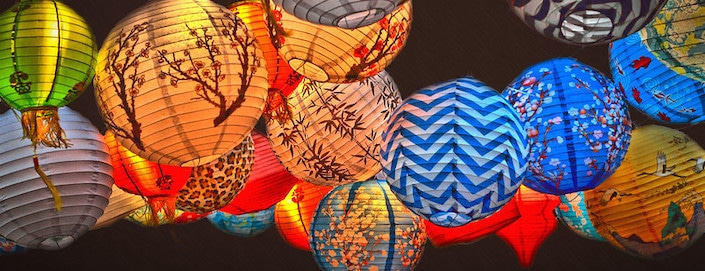
Table of Contents
What is China's Mid-Autumn Festival?
Mid-Autumn Festival is a day for friends and family to gather together, offer thanks to the fall harvest, and pray for longevity and good fortune.
This holiday falls on the day of a full moon, making rooftops a great place to spend the evening. The Mid-Autumn Festival moon is traditionally said to be brighter and fuller than at any other time of year.
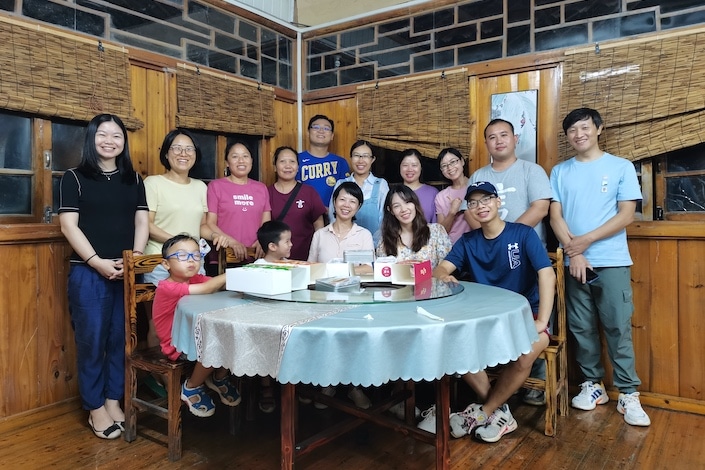
Members of the CLI family celebrate the Mid-Autumn Festival together.
The story of the Mid-Autumn Festival
Storytelling is an essential part of Chinese culture and many traditional holidays have stories and fables associated with them. Unsurprisingly, the Mid-Autumn Festival is no different. An abbreviated version of the story used to explain the origins of this important holiday goes as follows:
A very long time ago, nine blazing suns shone bright in the earth's sky. Our planet—too hot and too dry—was simply not conducive to human life.
Fortunately for the human race, a brave warrior named Houyi who was extremely skilled with a bow and arrow came into being. He was summoned by the emperor and was given a magical bow. With this bow he was able to shoot eight of the nines suns out of the sky, saving the world and all its people.
As a reward, the king gave the brave warrior a special elixir that, after drinking, would send him to the heavens for all of eternity. A beautiful ending indeed, but this brave warrior’s heart belonged to one of the fairest women in all the land, Chang'e.
He chose to stay on earth with his lover but he still graciously accepting the elixir as a token of gratitude. It was not until, in a stroke of pure evil did the warrior's arch nemesis attempt to steal the elixir and drink it for himself.
As the warrior was not at home, his lover was left to protect the elixir from this wretched evil. Seeing no other choice, his lover drank the potion herself and began to float away up to the heavens. The brave warrior smote down his enemy swiftly, but was too late to grab hold of his lover as she slowly levitated to the moon.
She has been on the moon ever since and will be there until the end of time. It is with this sadness that Chinese people look at the moon on the Mid-Autumn Festival remembering all their loved ones that they are separated from throughout the year.
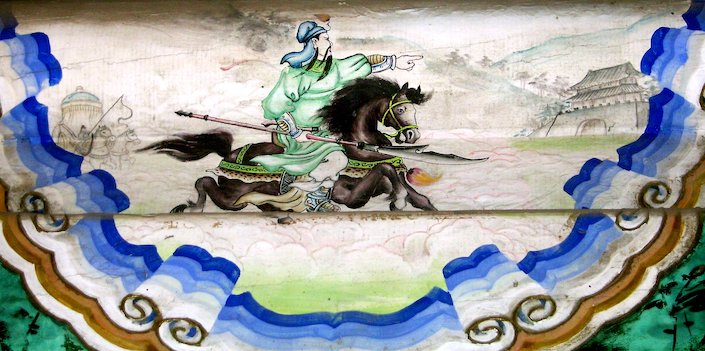
The Mid-Autumn Festival has its origins in the story of a mythical warrior and his beloved Chang'e.
Mid-Autumn Festival quick facts
Curious about the history and modern practice of the Mid-Autumn Festival? Read on for 中秋节 (Zhōngqiū jié) quick facts.
Origin
The holiday originated more than 3,000 years ago during the Shang dynasty but only gained widespread popularity 1,500 years later when emperors in the Tang dynasty began holding formal celebrations in their palaces.
Etymology
The English term “Mid-Autumn” directly translates from the Chinese holiday name 中秋节 (Zhōngqiū jié) which literally means “middle autumn festival.” See our article on Chinese stroke order to learn more about how Chinese characters are written.
Moon worship
In Chinese mythology, Houyi's lover Chang'e is said to be the goddess of the moon. After drinking the elixir of immortality, she will continue to live on the moon for all eternity accompanied by her faithful companion the moon rabbit. During the Mid-Autumn festival, it was once customary to set up alters and burn incense to worship her.
In Chinese culture, the moon is also associated with fertility. The full moon was traditionally said to represent a pregnant woman. Thus, worshipping the moon on the night of the Mid-Autumn Festival, when it was said to be at its brightest and fullest, was a popular activity among women in ancient China.
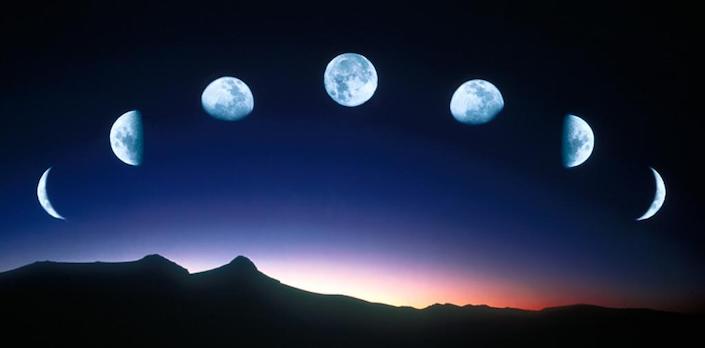
Admiring the beauty of the moon plays a central part in Mid-Autumn festival celebrations.
Mooncakes!
The most famous food during the Mid-Autumn Festival is the mooncake. Mooncakes are round cakes that are usually about the size of hockey pucks, although their size, flavor and style can differ depending on what part of China you are in.
There are almost too many flavors of mooncakes to try during the short-lived Mid-Autumn Festival. Ranging from salty and savory meat filled mooncakes to sweet nut and fruit filled mooncakes, you are bound to find a flavor that suits your pallet.
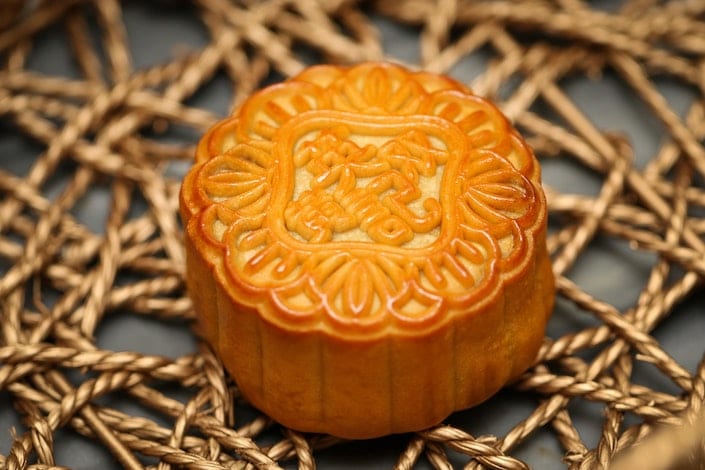
Chinese people traditionally exchange boxes of mooncakes as gifts during 中秋节 (Zhōngqiū jié).
Modern celebration
The Mid-Autumn Festival is celebrated with many cultural and regional variations. Outside of China, it is also celebrated in a variety of Asian countries including Japan and Vietnam. Generally, it is a day for friends and family to gather, eat mooncakes, and enjoy the full moon.
Many groups of ethnic Chinese also light different types of lanterns, symbols of fertility, to decorate and serve as a guide for spirits in the afterlife.
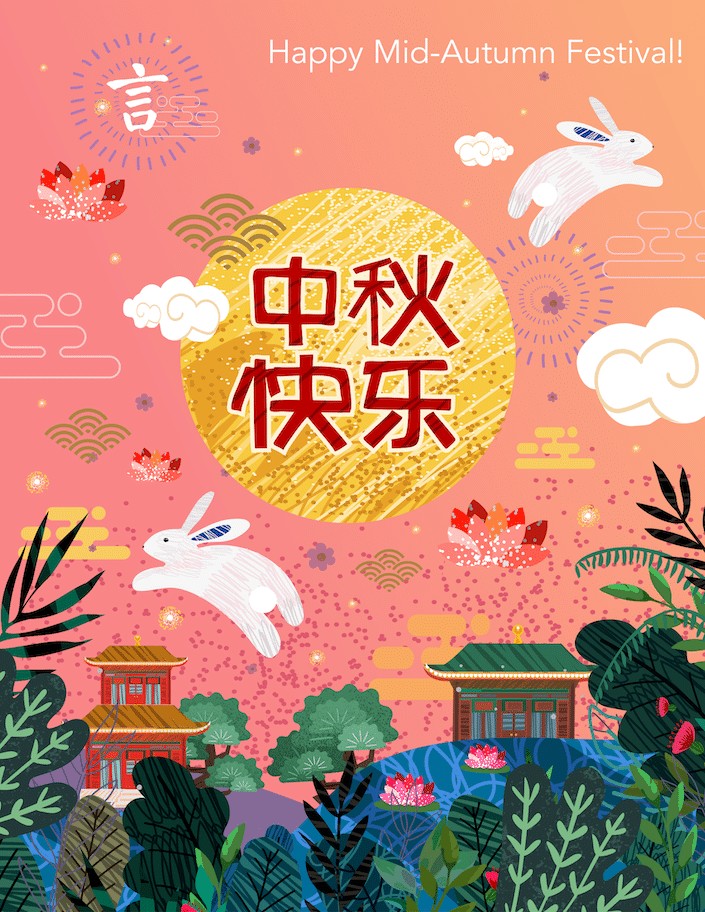
White rabbits, which represent the moon rabbit, legendary companion of Chang'e, are commonly associated with Mid-Autumn Festival.
Other names
In addition to "Mid-Autumn Festival," this important holiday is also known as:
- Moon Festival
- Harvest Moon Festival
- Mooncake Festival
- Reunion Festival
- 中秋节 (Zhōngqiū jié)
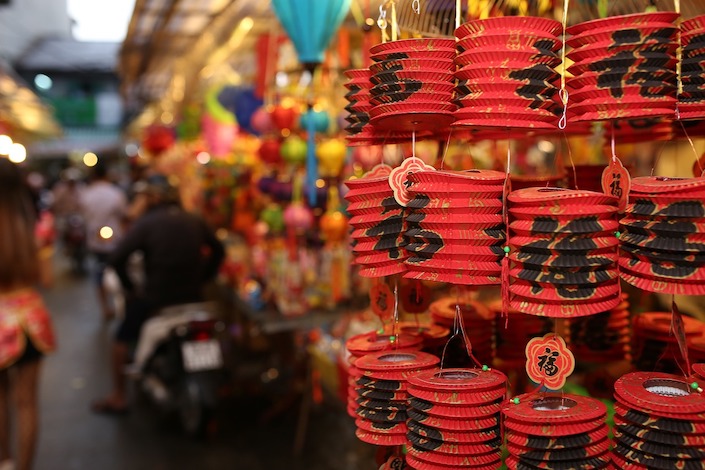
The Mid-Autumn Festival is a time to gather with family and friends and give thanks for a bountiful harvest.
CLI celebrates Mid-Autumn Festival!
中秋节 (Zhōngqiū jié) is a time for friends and family to gather and celebrate the coming harvest season. As such, each year CLI organizes a variety of activities for our community.
On the rooftop under the full moon
Each 中秋节 (Zhōngqiū jié), the Chinese Language Institute (CLI) hosts a Mid-Autumn Festival party on the rooftop of the CLI Center, overlooking the beautiful scenery of Guilin. CLI’s students and teachers, as well as Chinese students from our university partner, Guangxi Normal University, share a wonderful, fun-packed evening of games, food and music.
The evening starts out with an informative presentation given by one of CLI’s teachers. We learn about about the history of the holiday and its age-old traditions. After some trivia games to see how well everyone paid attention, our team and students are well acquainted and ready to start the celebration.
After having our fill of fresh fruit, mooncakes, Chinese tea and other tasty treats, the celebration may transition to a grand game of charades. Unchecked by language barriers and cultural differences, everyone is able to enjoy the game, learn a few Chinese idioms, and find out a bit more about each other’s acting skills and personalities.
Don't be surprised if you see traditional Chinese lanterns floating in the sky in the distance, soaring slowly upward. On Mid-Autumn Festival, lanterns are used to write down one's wishes and prayers and send them to the heavens to be answered.
How the CLI team celebrates Mid-Autumn Festival
In addition to our annual rooftop party, the autumn holiday is also an opportunity for members of the CLI team to celebrate the holiday together. CLI teachers and staff often travel to a guesthouse in a picturesque rural area outside Guilin or visit a countryside village to soak in Guilin's natural beauty.
There, we enjoy an outdoor barbecue and marvel at some stunning scenery, which this year included giant fields of pink ornamental grasses and blue flowers flanked by Guilin's iconic karst peaks.
Although it's just one of many holidays in China, the Mid-Autumn Festival really is one that's not to be missed.
中秋节快乐! Happy Mid-Autumn Festival!
Chinese vocabulary and sayings for the Mid-Autumn Festival
| 汉字 | Pinyin | English |
|---|---|---|
| 中秋节 | Zhōngqiūjié | Mid-Autumn Festival |
| 中秋快乐! | Zhōngqiū kuàilè! | Happy Mid-Autumn Festival! |
| 中秋佳节 | Zhōngqiū jiājié | the joyous Mid-Autumn Festival |
| 祝你和你的家人中秋快乐 | Zhù nǐ hé nǐ de jiārén Zhōngqiū kuàilè | Wish you and your family a happy Mid-Autumn Festival |
| 但愿人长久,千里共婵娟 | Dàn yuàn rén chángjiǔ, qiānlǐ gòng chánjuān | Wishing us a long life to share the graceful moonlight, though thousands of miles apart. |
| 祝福中秋佳节快乐,月圆人圆事事圆满 | Zhùfú Zhōngqiū jiājié kuàilè, yuè yuán rén yuán shì shì yuánmǎn | Happy Mid-Autumn Festival! May the round moon bring you and your family happiness and a successful future. |
| 八月节 | Bāyuèjié | another name for Mid-Autumn Festival (15th day of the 8th lunar month) |
| 团圆节 | Tuányuánjié | another name for Mid-Autumn Festival that emphasizes family reunion |
| 节日 | jiérì | festival; holiday |
| 佳节 | jiājié | festive day |
| 月亮 | yuèliang | moon |
| 满月 | mǎnyuè | full moon |
| 月饼 | yuèbing | mooncake |
| 合家团圆 | héjiā tuányuán | reunion (of the whole family) |


